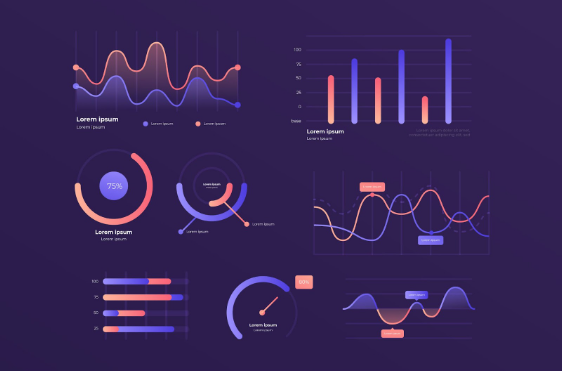Compared to other fields, robotics has particular characteristics, because it aims to allow a physical agent to interact with the concrete world.
Author: Manuel Allegue
HSBC
Zentricx, was summoned by HSBC Bank, based on their optimization needs. Requested the installation and implementation of Viya®, in order to obtain the capabilities provided in the Machine Learning models.
How to choose the most appropriate type of graph?
When visualizing data, it is important to consider the objective and adapt the graph to the desired storytelling. The audience to which the results will be displayed also influences the choice of chart type. The size and type of data, as well as the relationship between the variables, also determine which type of graph is most appropriate. It is recommended that you experiment with different charts and use multiple charts to maintain clarity and show comparisons, trends, and relationships between variables.
What industrial revolution is your company in today?
The Fourth Industrial Revolution poses challenges for companies. Although digitalization forced by the pandemic has paved the way, there is still a long way to go. The adoption of Data Intelligence and Big Data tools is low in Spain, and many companies lack a consistent data strategy. Successful transformation requires a comprehensive business strategy change and the ability to anticipate disruptions.
Are there differences between a CRM and a CDP?
Both CRM and CDP technologies are valuable tools, but for different purposes. While CRMs focus on managing customer interactions, CDPs focus on collecting and understanding customer behavior data. The choice depends on the specific needs of each company and sales and service oriented roles can benefit more from a CRM, while customer management strategy oriented roles can take better advantage of a CDP. Ultimately, it's important to assess what kind of information is needed and how it will be used to make more informed business decisions and deliver personalized customer experiences.
Big data applied to health: a revolution for the entire health system
Applying Big Data strategies in the healthcare sector has multiple benefits, including making accurate decisions, improving patient experience, and reducing costs. Data collection and analysis can help medical professionals and healthcare administrators make informed decisions about treatments and services. Integrating patient data into a single record enables integrated healthcare, and solutions such as electronic data interchange facilitate interoperability and the secure transfer of clinical information. Additionally, the use of technologies such as chatbots, augmented reality and robotics in healthcare provides additional benefits, improving patient intake, surgical practice and home care. In short, Big Data has the potential to transform healthcare, improving quality and reducing costs.
Sport and AI: From the "play from the board" to the "play from the data"
Digital transformation is impacting the world of sport, including football, with the use of artificial intelligence (AI) and data analysis. At the 2022 World Cup in Qatar, teams had access to advanced statistics generated by FIFA to evaluate their performance. Data and video analysts were used to collect information during matches. The current challenge is not only to accumulate data, but to develop the ability to interpret it and obtain relevant information for strategic decision making. AI and analytical tools allow data to be used to develop strategies based on strengths and weaknesses. The question arises whether data will replace intuition in football.
Loyalty Programs: Why Are They Important?
Loyalty programs are strategies used by companies to maintain and increase their customer base by offering promotions and rewards. Customizing these programs is key to increasing customer engagement and generating higher revenue. Loyalty programs aim to retain customers, get to know them better and obtain greater benefits, offering competitive advantages, reducing loyalty costs, generating recommendations and allowing more effective campaigns. There are different types of loyalty programs, such as points, multi-brand, and tiered rewards.
From competitive to collaborative: how AI impacts the empowerment of human talent
Automation and artificial intelligence (AI) are creating more jobs than they replace. It is expected that by 2025, 97 million new vacancies will be created, exceeding the 85 million workers that are estimated to be replaced. The demand for roles such as data analysts, AI and machine learning experts, data scientists, and synthetic data builders is constantly growing. Furthermore, AI drives hybrid work, where machines perform repetitive and dangerous tasks, while humans focus on higher value-added activities.
Training algorithms: why artificial intelligence should not be left alone
The 65% of companies in Spain run the risk of becoming irrelevant if they do not adopt big data strategies, a growing sector of the annual 30%. Machine Learning allows models to learn automatically, but requires human supervision to avoid negative results, as in the case of the Microsoft bot. Data quality and quantity, as well as accurate and efficient labeling, are key to successful Machine Learning model training.











